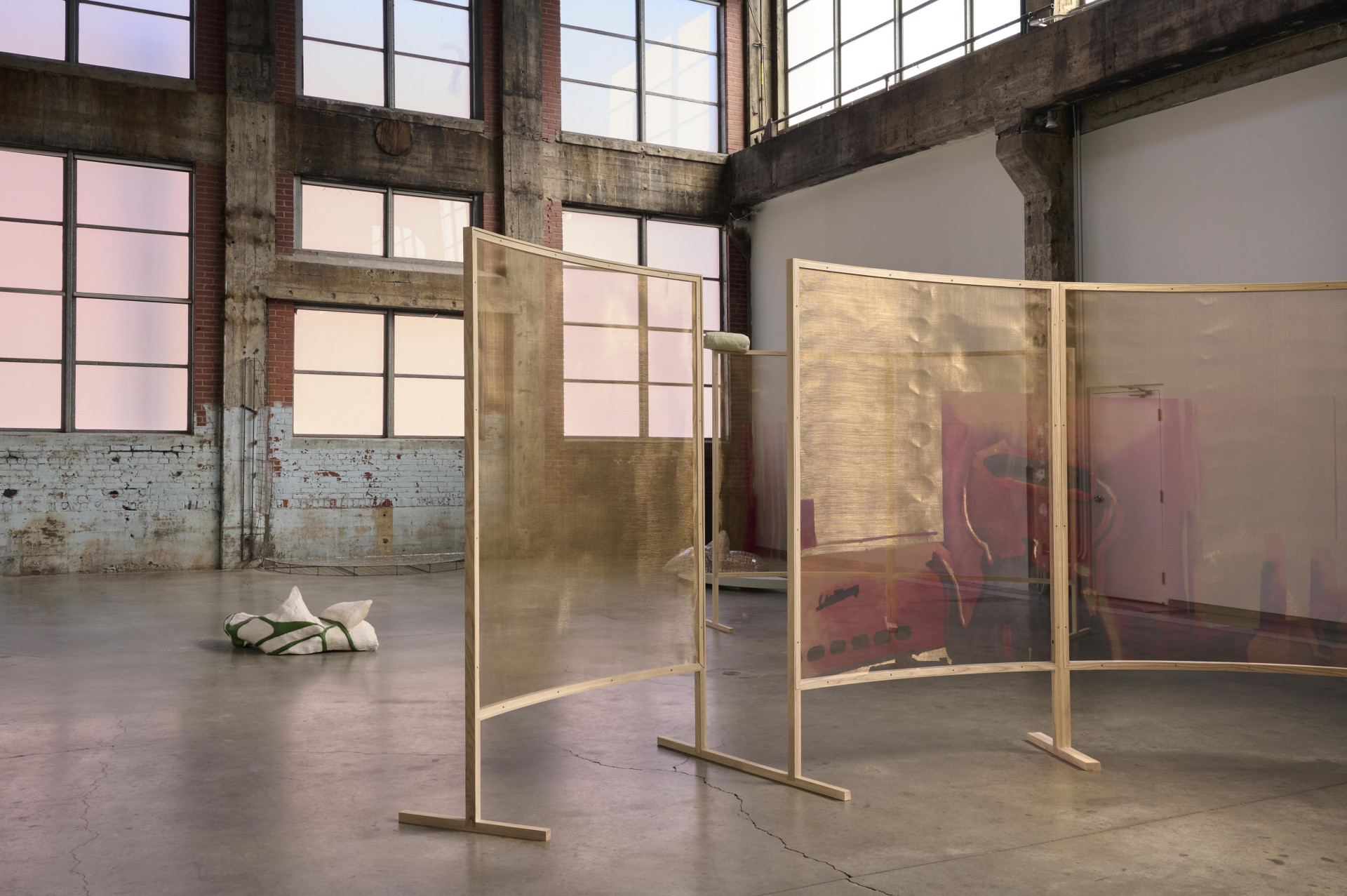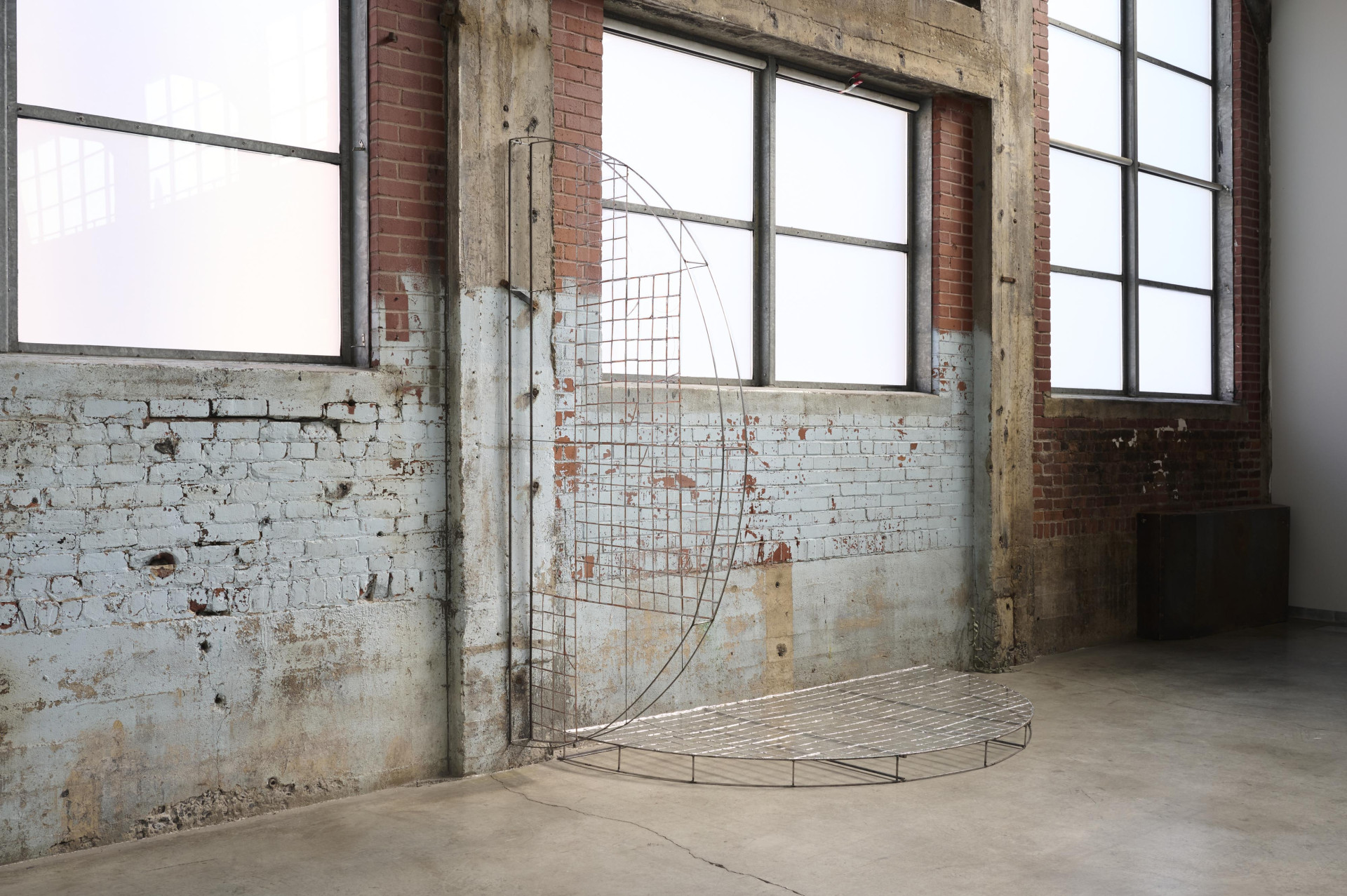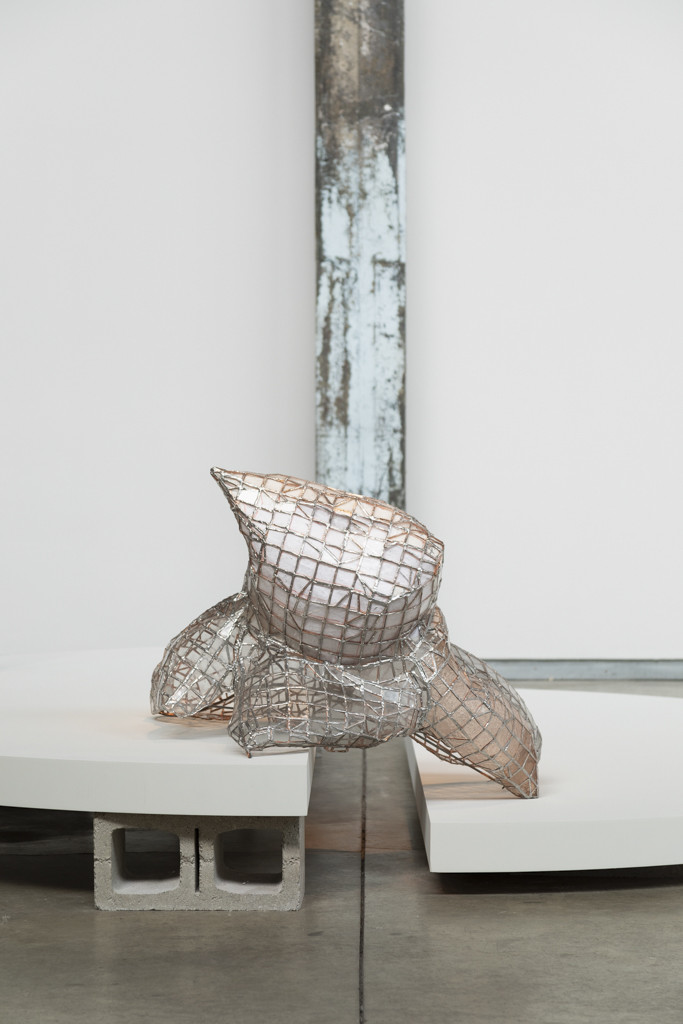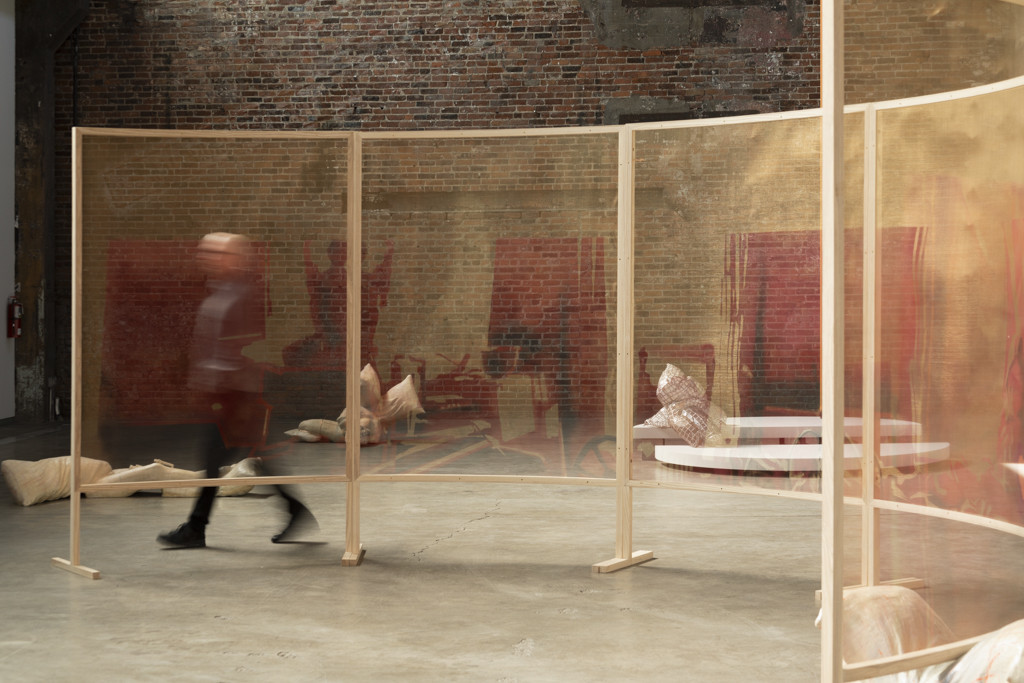



“You and I are also fictions and we live in this collective dream.” [1] This is the phrase chosen by philosopher and queer-trans activist Paul B. Preciado to introduce Pornotopia, a book examining how the Playboy empire participated in the proliferation of the multimedia, utopic, and ultra-connected spaces that characterize today’s world. Yet what exactly makes up this collective dream? Montreal artist Frances Adair Mckenzie also poses this question, which underlies her solo exhibition paradoxically titled Private Life. Through remarkable sculptural works, she illustrates her vision of the current cycles of production, consumption, and desire that dominate the fields of contemporary art and digital technology.
For Preciado, it is clear that the regime of desire is in crisis, a condition exacerbated by the repercussions of a global health crisis whose effects we’re still feeling. In a podcast produced by the newspaper Le Monde, he explains the technological omnipresence and the hold of capitalist patriarchal structures that participate in creating a specific taste attracted to speed, overconsumption, and overproduction. Nevertheless, he remains optimistic: How can we invent a new form of desire for humanity? Drawing inspiration from the non-conformist and sensual universe of this atypical philosopher, Adair Mckenzie presents a formal exploration of our desires connected to increasing intersections between private and non-private spaces, through an ambitious and radically morphic staging.
The layout of the exhibition Private Life in the Main Hall gives the impression of entering an animated scene suspended in time, a decor situated somewhere between the public domain and the domestic sphere. A series of objects evoking the female body and familiar household objects an experiential landscape composed of strange reclining nudes, erotic body pillows, giant pills, and circular screens. Titled Replace with Gases (After Chantal Akerman’s La Chambre 1972), a series of twelve screens in wood and bronze evokes the omnipresence of technology in our lives and succeeds in addressing the subject without resorting to a digital interface. Imitating a panoramic view, these “fake-screens” refer to our ways of seeing and being observed, echoing the experimental films of Michael Snow and Chantal Akerman, two artists who positioned themselves at the centre of a 360º image in the early 1970s [2]. As a symbolic object, the screen is a site in which our personal, professional, intimate, and social experiences are compressed within the same space. Supporting a variety of highly utilitarian gestures—entertainment, shopping, teleworking, or getting in touch—the screen is also inseparable from issues of biosurveillance, digital tracking, consumer excess, overconsumption, and hyperconnectivity.
The exhibition Private Life retraces historical and artistic iterations of a co-evolution between body, device, architecture, and environment. Staggered throughout the space, sculpted disks of glass and wood, cut on the diagonal, raised, and installed vertically. Vaguely recalling the shape of pills and bearing titles such as Migraine Season, Pheromone Throne, and Like a Fat Gold Watch (Love Set You Going), these works refer to Hugh Hefner’s famous rotating, round bed, a piece of furniture designed specifically for the magnate, allowing him to live his life as a horizontal man. Preciado considers this object to be a 1970s precursor to our hyperconnected lifestyles and a symbol of the moment when private life, defined by intimacy, the domestic interior, and sexuality, tipped into the public domain and became the centre of economic production and media. [3]
It’s impossible to evoke the question of the image, eroticism, and commodification without also implicating the question of the femme body. This awareness of the fantasized, observed, scrutinized body is formally explored here in a series of sculptures posing as the true protagonists of the exhibition.These half-human, half-pillow beings have impetuous and voluptuous titles that evoke the popular clichés of the sex symbol, the girl next door, the cam girl, and the modern-day Venus. Referencing a broad timeline of technical and technological developments, such as Albrecht Dürer’s perspective grids, the axes and armatures of digital animation, or the handheld camera, Adair Mckenzie sublimates and short-circuits the sculptures’ sensuality. Their hybrid nature, imposing materiality, and placement in the middle of beds and screens suggest a limitless appetite existing outside of what is conventionally designated as desirable. Inspired by the complexity of the Japanese anime world and the destabilizing characters in Sawako Nakayasu’s poetry collection Some Girls Walk Into The Country They Are From, Adair Mckenzie allows the body, as a mutable form, takes precedence in the Main Hall and at the centre of the narrative.
“The desire to have a certain way of life is curiously first an image and second a reality. I see, therefore I desire” seems to be the contemporary cogito ergo sum [4] in all spheres of life. This Cartesian notion seems even more essential to the creation of our individual identities when a covetousness for the observed thing aligns with our web or social media avatars. Constantly fed by an incessant influx of images and information that maintain the need to share one’s life in the public domain, these collective fictions reinforce the idea that a subjectivity exists only if put on show. Although widely criticized, these mediated universes offer a seductive alternative to the restrictions of the real world. Private Life plays on the appealing double position of star and voyeur, staking a claim for the poetry of an existence in constant flux.
Milly Alexandra Dery
Translated by Oana Avasilichioaei
INTRODUCTORY VIDEO
[1] Paul B. Preciado, Pornotopia: An Essay on Playboy’s Architecture & Biopolitics (New York: Zone Books, 2014), 7.
[2] Michael Snow’s film Standard Time (1967) was an inspiration for Chantal Akerman’s La Chambre (1972). In both films, the two artists respectively represent the spaces of a studio and an apartment through panoramic travelling shots.
[3] Paul B. Preciado, Pornotopia: An Essay on Playboy’s Architecture & Biopolitics (New York: Zone Books, 2014), 53.
[4] The Latin expression “I think, therefore I am” was theorized by philosopher René Descartes in the 19th century. It is interesting to see its syntactic formulation taken up in the anthology Capitalism and the Camera: Essays on Photography and Extraction, ed. Kevin Coleman and Daniel James (New York: Verso Books, 2021), 3.
ACKNOWLEDGMENTS
The artist would like to thank the Canada Council for the Arts and the Conseil des arts et des Lettres du Québec for their financial support; The artist would like to thank Milly Alexandra Dery, Caroline Andrieux and the Foundry team, Jayme Spinks, Copy Shop Books, Tokyo Art and Space, Centre Clark and the NFB. Thanks to Montreal's vibrant art scene for its conversation and support most especially, Kuh Del Rosario, Madelene Veber, Alisha Piercy, Ji-Yoon Han, Jennifer Wade, Jeremy Shantz, Brandon Blommeart, Frederique Thibault, Frederic Lamontagne, Adam Wanderer, Ellen Smallwood, Kyle Tryhorn, Marlon Kroll, Valerie Blass, Roxanne Chiebes, Daphne Boxer, Amy Chartrand, Abbas Akvan and the artists in Montreal Studios (2019-2023).Very special thanks to Kara Skylling, Frederic Chabot, Carol Wierstra, Robert Mckenzie, David Armstrong Six and Winston, nothing without you guys.
Frances Adair Mckenzie
Frances Adair Mckenzie is a visual artist and animator based in tiohtiá:ke or so-called Montreal. She holds a bachelor of fine art from Concordia University. Her video work has been widely exhibited internationally, most notably at the Somerset House, in London, at The MAXXI museum in Rome, and TOKAS residency in Tokyo. Frances Adair Mckenzie has exhibited at the Musée d'art contemporain des Laurentides, Parisian Laundry, Centre Clark and the Satosphere (Society for Arts and Technology) in Montreal. Two animations and a stop-motion virtual reality piece have been produced by the National Film Board. Her virtual reality piece was nominated for a Prix Gémeaux, in Quebec, and won a Canadian Screen Award for best immersive fiction.
